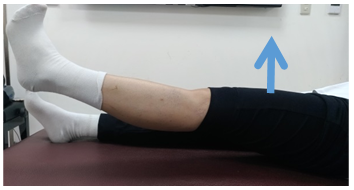What is osteoarthritis?
The knee joint is composed of the cartilage, joint capsule, joint fluid and ligament, with the upper part connected with the thigh bone (femur) and the lower part with the calf bone (tibia). The cartilage and articular fluid act as a cushion, helping to reduce knee friction and act as a buffer as we move around.
The cartilage on the surface of our knee joints wears away and loses elasticity after prolonged exposure to gravity or trauma, or certain diseases. This causes the bones beneath the cartilage to bear more stress, which eventually thins the cartilage, narrows and deforms the joints. This is when joint pain, swelling, stiffness, deformation, and limited movement occur.
Osteoarthritis is most common in patients over the age of 45, and twice as many women as men. The disease is also more common in people who regularly run and jump, are overweight or have joint injuries.
Prevention
In principle, it is to reduce the knee joint load, such as properly controlling the weight, avoiding the knee joint kept in the same position for a long time, achieving the shock absorption effect with appropriate shoes, reducing the joint damage, and avoiding lifting or carrying heavy objects.
Treatment
- Physical therapy: cold and hot compress, deep hyperthermia, such as ultrasound or shortwave irradiation, electrotherapy and other methods can be used to alleviate pain.
- Movement therapy:
Muscle strength training: muscle strength training can increase muscle strength and endurance, reduce joint load. Basically, it can be done once every two days, but as the degree of degeneration of each person is different, the exact frequency can be discussed with the doctor, and it should be noted that the exercise should not cause pain. Exercise twice a day, 15-20 rounds a time according to the following instructions.
- Sit flat on the floor, legs straight; Then push your feet up as hard as you can, and work your thigh muscles hard to straighten your legs so your knees touch the ground. Hold this position and count to 5, then relax
.png)
- Lie on the floor, then keep your knees straight and lift your legs off the floor about 5-8 cm. Hold in this position and count to 5 before lowering.

- Use of aids:
According to the condition of pain, joint range of motion and muscle strength, appropriate assistive devices are used to reduce the joint burden and avoid pain. Walking sticks or walking aids, for example, can help keep the gait stable and avoid joint deformation, high blood pressure or heart disease caused by improper application of force.
- Medication:
Relieve pain and improve symptoms by taking analgesics, nonsteroidal drugs or direct injection of sodium hyaluronate or steroids into the joint (subject to medical instructions).
- Surgical treatment:
When none of the above treatments is effective, the orthopedic surgeon should evaluate the possibility of surgery and determine the procedure.
Suitable exercise
Patients with osteoarthritis should reduce the load on their knees and should not exercise too hard. Walking, brisk walking, cycling, swimming, taijiquan, yoga and other sports are more suitable, especially underwater workouts, which can ease the joint load by buoyancy and are most suitable for patients suffering from osteoarthritis, and can achieve the purpose of increasing physical strength without aggravating the damage to the joint.

